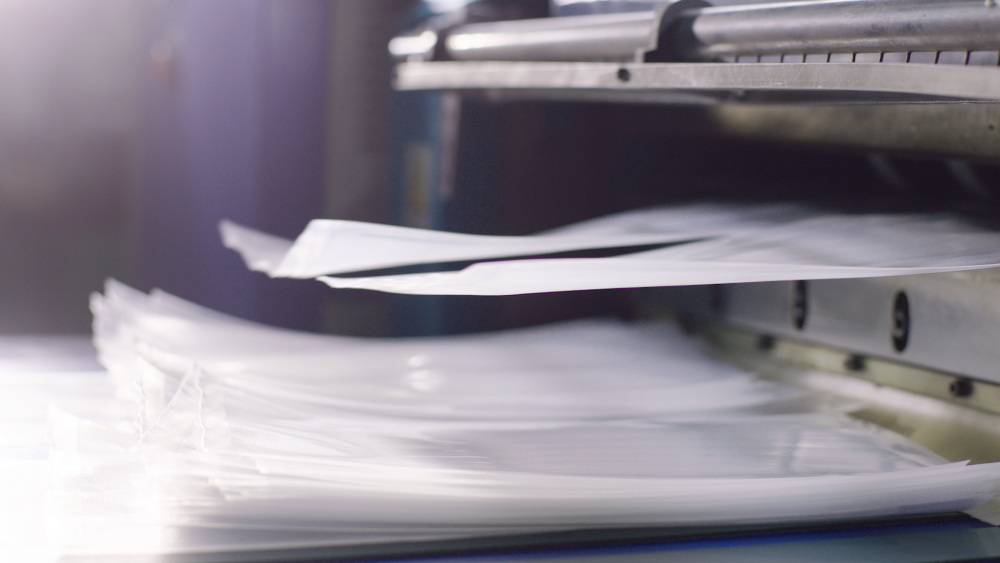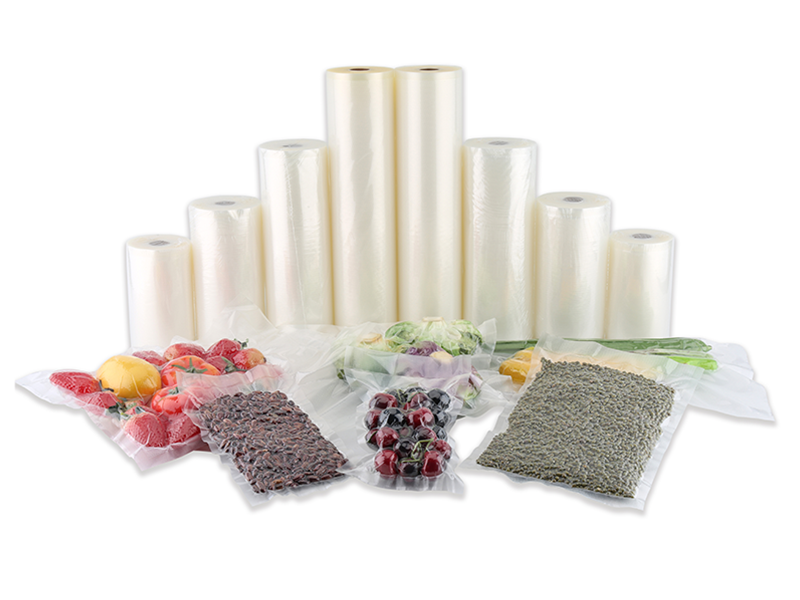Understanding these factors will help you make an informed choice.
Vacuum sealing is becoming a game changer, mainly in food storage and preservation. However, finding the right vacuum bag type that meets your specific needs can be a daunting task. That’s why this blog post is here to help you understand the types of vacuum bags, their pros and cons, and when to use each.
Embossed or Flat Vacuum Bags?
Embossed vacuum bags, also known as channelled vacuum bags, have a unique design pattern that aids in the extraction of air during the vacuum sealing process. The embossed texture creates channels for the air to escape more efficiently, ensuring a tighter seal.
Pros: Embossed vacuum bags are perfect for heavy-duty usage and are compatible with most vacuum sealers. They also offer a great seal, thanks to the embossed texture that effectively sucks out air. Besides, embossed texture makes the bags more puncture-resistant and durable than other flat bags. They’re more ideal for long-term storage of sharp or heavy items.
Cons: They can be more expensive than flat bags, and sometimes.
Flat vacuum bags are smooth and without embossed channels. They’re commonly used with commercial, chamber type vacuum sealers that evacuate the air within the whole chamber.
Pros: They are usually cheaper than embossed bags, and the clear surface provides a better view of the bag’s contents.
Cons: Flat vacuum bags are typically not compatible with domestic suction type vacuum sealers. They also may not vacuum as competely as embossed bags, leading to potential spoilage.
Rolls or Pre-cut Bags?
Vacuum seal rolls provide flexibility and customization. You can cut them to the exact size you need, reducing waste.
Pros: Ideal for items with unusual sizes. They are generally more cost-effective since you can customize the size.
Cons: They can be time-consuming to cut and seal, especially if you’re sealing many items.
Pre-cut vacuum bags are ready for immediate use. They are handy if you frequently vacuum seal items of the same size.
Pros: Convenient and time-saving. They are excellent for standard-sized items.
Cons: They may result in waste if the item you’re sealing is far smaller than the bag. They also tend to be more expensive than rolls.
Black Vacuum Bags or Aluminum Vacuum Bags?
Black vacuum bags are designed to block light and are commonly used for long-term food storage.
Pros: They help prevent light-induced degradation, which is beneficial for storing light-sensitive products, like herbs and medicines.
Cons: The dark color obscures the contents, making it hard to identify what’s inside without opening the bag.
Aluminum vacuum bags offer an extra layer of protection against light, moisture, and oxygen. They’re often used for long-term storage and sous vide cooking.
Pros: They provide excellent barrier properties, ensuring food stays fresher for longer.
Cons: They are typically more expensive.
Zipper Valve Vacuum Bags?
Zipper valve vacuum bags come with a built-in ziplock and a valve for vacuum sealing. They can be used with handheld vacuum sealers, or vacuum sealers with accessory function. These bags are ideal for frequent access to stored items.
Pros: They are reusable, easy to use, and great for non-food items or for foods that you need to access regularly.
Cons: They may not provide as tight a seal as other types of bags. They are also typically more expensive due to their added features.
Five-sided or Eight-sided Vacuum Bags?
Five-sided vacuum seal vacuum bags are pre-sealed on five sides, with one side left open for vacuum sealing. Their side gussets allow for greater capacity and more fillings, while the wider opening makes them easy to load with products.
Eight-sided vacuum seal vacuum bags or box bags have seals all around, making them stand upright. They offer an aesthetically pleasing and professional look, ideal for retail presentation. They are easy to fill, stand upright for easy storage, and provide a great display for products.
In conclusion, each type of vacuum bag serves a unique purpose, and your choice will depend on your needs, the nature of the items you plan to vacuum seal, your budget, and your vacuum sealer’s compatibility with the bag type. Understanding these factors will help you make an informed choice. Happy vacuum sealing!


